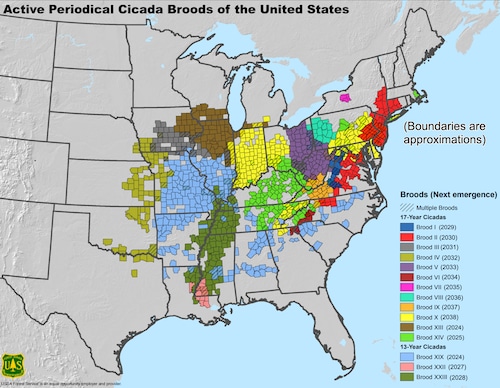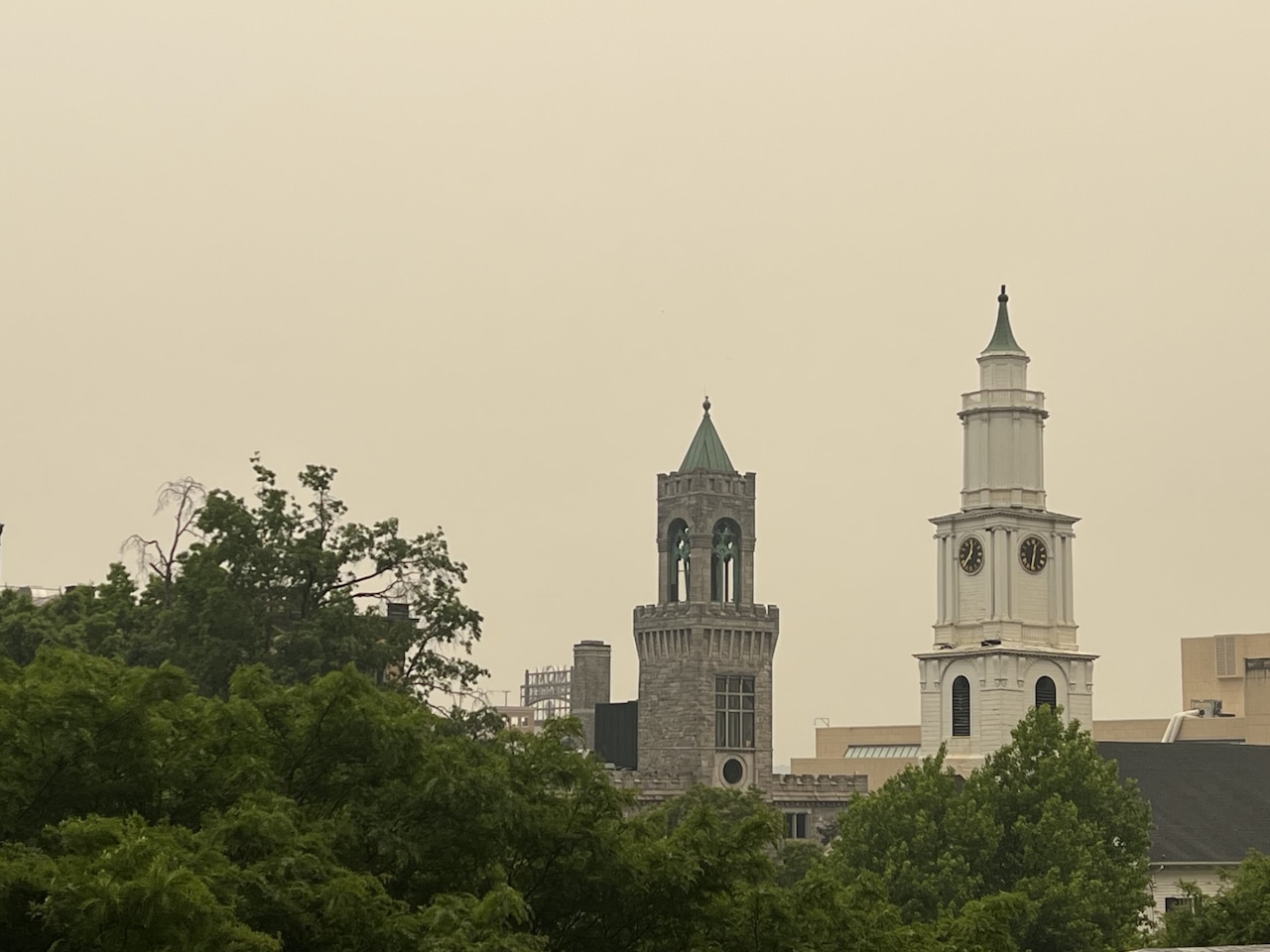Cicadas are expected to emerge around Cape Cod and Long Island in 2025 — but their numbers have dwindled over the years.
The flying insects make their presence known through their sounds but they “do very little damage to their environment,” according to Vanderbilt Associate Professor of Biological Sciences Patrick Abbot.
Cicadas are valuable members of our ecosystem. Without these insects, birds and other predators would not have food to eat, according to the Environmental Protection Agency. They also aerate lawns and improve water filtration in the ground. As their bodies decompose into the soil, they add nutrients to the Earth.
Abbot stated that the cicadas provide essential nutrients for tree growth, according to Vanderbilt. They can also feed squirrels, turtles, snakes, spiders and fungi.
Not all periodical cicada populations are dwindling. But in some areas of the U.S., including Cape Cod, experts have observed declines.
Next year, cicadas from Brood XIV will be spotted around Cape Cod and Long Island. But, John Cooley, an entomologist at the University of Connecticut, doesn’t believe their numbers will be that robust, CBS Boston reported.
Cicadas from Brood XIV, which appear on Cape Cod — among other places — were stronger in 2008 but previously have had their numbers fall in 1991, compared to their 1976 emergence, the Cape Cod Times reported.
“The ones on Long Island have really been declining over the past couple of emergences, and the ones on the Cape are kind of heading in that direction as well,” he told the station. “They’re more fragile than you think.”
Experts believe development, pesticides and invasive species can negatively impact some cicada populations, The New York Times reported.
The development of roads, buildings and other types of infrastructure can trap cicadas populations underground, The New York Times reported. Deforestation can also leave the insects without a source of food.

This is a USDA Forest Service map showing, county-by-county, where periodical cicada broods of the United States are located, and when they can next be expected to emerge.US Forest Service
Brood X, the largest brood of 17-year cicadas, which emerge across the mid-west and some parts of the northeast, was once known to be quite vibrant in Long Island, The New York Times reported. But in recent decades their numbers have declined, and they were nearly absent from the island in 2004 — their last emergence.
Newsday, a daily newspaper serving Suffolk and Nassau Counties in Long Island, reported that the Brood X cicadas “made only cameo appearances,” in 2004.
“All is still quiet on [Long Island]. I checked in with Connetqout State Park Preserve and there’s nothing doing there,” one user from Long Island wrote in 2004 on Cicadamania.com, a website that tracks cicadas.
“This 3,500-acre preserve was a local hot spot for brood X in 1987 and remains mostly unchanged since then. Yet, the park staff has seen nothing. No holes, no skins, nothing! The same goes for the other towns or locales in which brood X was prevalent in ‘87,” they added.






